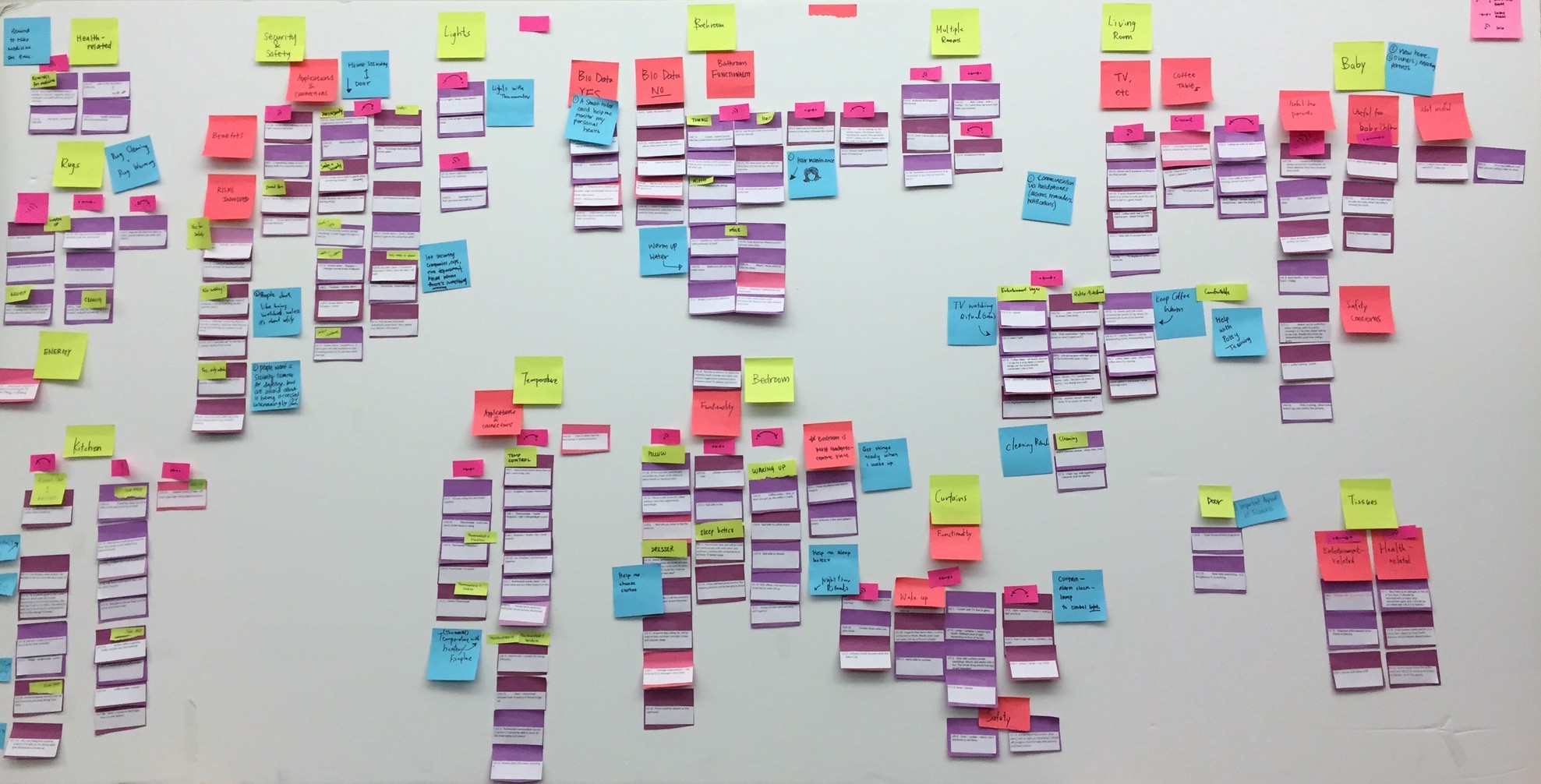In a paper by Takashi Iba, he explores an essential part of the process he uses in the development of new pattern languages – a practice that is called "clustering". This practice was developed by Jiro Kawakita, a Japanese anthropologist and is the basis of what is often called 'Affinity Mapping'.

Takashi explores this practice in a paper entitled Philosophy and Methodology of Clustering in Pattern Mining ![]()
>We seek to deepen the understanding of this method and its underlying intentions by quoting Kawakita’s explanations in an English translation. In particular, this paper elaborates on the following factual statements: the method was developed via field science; the method uses a bottom-up approach to generate order from chaos; the method requires that the data be viewed outside of any existing concept or framework; the method prioritizes feelings over reason; and at the conceptual level, the method is consistent with the essence of creativity.
Further, he notes the follow:
>... as feelings rather than rational thinking play a significant role in this method, it can be a difficult topic to understand. However, the emphasis on feeling and quality is consistent with ideas put forward by Christopher Alexander, suggesting that this method makes sense in terms of the consistency between the pattern language methodology and its underlying theory.
We are encouraged to generate order – the vessel of inherent quality we call beauty – from chaos, using an intuition guided by feelings – Beauty Unfolding.
It is with this intention that we seek to unlock the potential of Natural Order we sense in Alexander's 15 Properties to help us in this quest of Finding Meaning.
DOT FROM preview-next-diagram